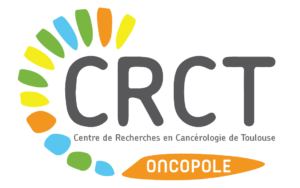
Colorectal tumors are heterogeneous and hierarchical. Tumor growth relies on the proliferation of cancer stem cells, which constantly produce non-proliferative differentiated cells that eventually die. Despite this hierarchy, treatments targeting cancer stem cells often fail at eradicating the tumor, because the remaining cancer cells dedifferentiate to replenish the stem cell pool. It is thus crucial to understand which factors compose the tumor stem cell niche to induce cancer stemness. While most research focuses on niche factors produced by the stroma, we studied the appearance of stem cells in tumor organoids cultured in the absence of niche factors. In these minimal conditions, stem cells spontaneously appear at the center of the organoid after 3 days in culture. Physical confinement of the organoid boosts the appearance of stem cells, showing that stemness can be mechanically induced by cell crowding. Furthermore, while small organoids mostly contain cancer stem cells after 5 days of culture, large organoids position the stem cell niche at the organoid edge and develop a differentiated area in the center. These organoids establish a functional hierarchy: stem cells proliferate at the edge, migrate towards the organoid center, differentiate, and die. This spatial distribution of cell types and functions is strikingly similar to that observed in real tumors. Our results show that cancer cells have an intrinsic ability to generate a stem cell niche in the absence of external signals and that there is a critical size to establish a functional hierarchy. Further experiments will reveal the molecular mechanisms governing these self-organizing principles, as well as their contribution to tumor progression.
References:
Pérez-González C*, Ceada G* et al. Mechanical compartmentalization of the intestinal organoid enables crypt folding and collective cell migration. Nat Cell Biol 23, 745–757 (2021).
Barbazan J*, Pérez-González C* et al. Cancer-associated fibroblasts actively compress cancer cells and modulate mechanotransduction. bioRxiv 2021.04.05.438443 (2021).
Pérez-González C*, Alert R* et al. Active wetting of epithelial tissues. Nat. Phys. 15, 79–88 (2019).
Lien vers la retransmission MS Teams



